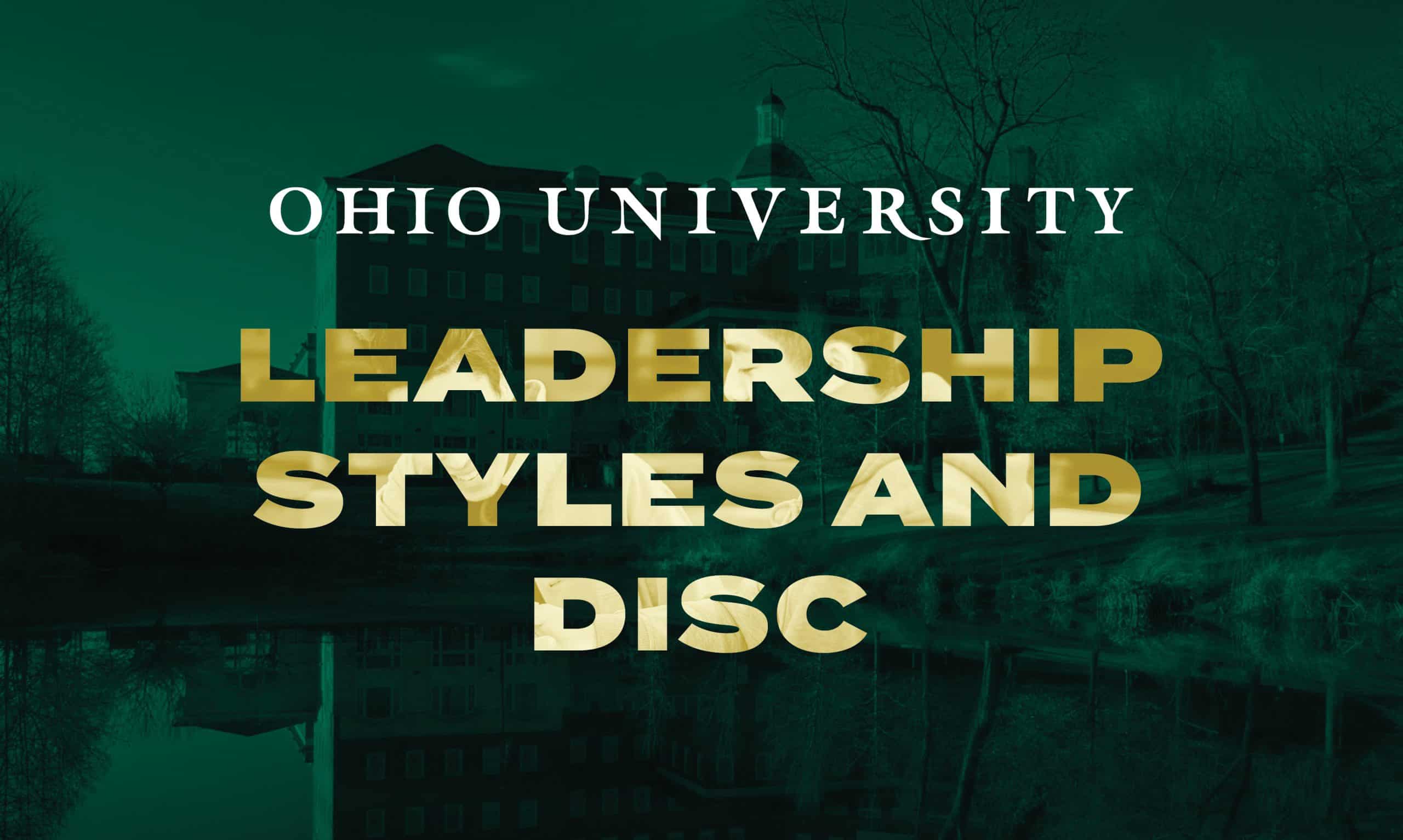Sport Leadership & DISC
Now it's time to start building on your understanding and application of DISC and apply it to developing effective leadership in sport. In this section, we'll begin to explore how you can use DISC to enhance your performance as a leader and get the best out of those you work with.
Leadership in Action
The below video is an interview with Brian Townsend, Executive Director of Leadership Development at the University of Michigan. Brian is an exceptional example of someone in a leadership position who is utilizing DISC within his role, and also using it to development leadership within the university student-athlete leadership environment.

DISC Leadership Styles
In this video we’re looking at the different leadership styles and how we can use our DISC Profiles to understand these. We’ll look at how individuals who measure highest in each of the four DISC styles are likely to demonstrate leadership, and share real-life examples of what this looks like in action.

ACTIVITY
DISC LEADERSHIP STYLES
After watching the video above, use this worksheet to reflect on your own DISC Leadership Style.
Situational Leadership
Let’s explore some of the different theories around leadership as recent research has shown that leadership is a distinct competency, which can be taught through formal and informal training, and experience gained in many differing environments.
TRADITIONAL LEADERSHIP THEORY
Traditional leadership theory refers to the early, foundational ideas developed to understand how leadership works, often focusing on the traits, behaviors, and roles of leaders in guiding and influencing others. These theories emerged before more modern, situational, or transformational views of leadership were developed.
Here are some considerations on the traditional view.
- Leadership is a combination of personal talent, skills and physical characteristics.
- Leaders are born.
- Leaders control and dominate.
- Leaders have formal power and authority.
- Leaders are lone ranger types.
- Leaders are mysterious and heroic in their interactions with others.
Try to think of three other examples of ‘traditional leadership’ from your own experiences.
A MODERN APPROACH TO LEADERSHIP
Today’s theorists emphasize that leadership should adapt to different situations. Different circumstances require different styles and responses. This is called Modern or Situational Leadership, and we’ll be focusing on these concepts.
We’ve moved away from the authoritative “command and control” style to a more collaborative and relationship-focused approach. Leaders now need to be good at building relationships, adaptable, sensitive to others, alert, and able to make changes.
The best leaders create a culture with shared values and beliefs, transparency, and open communication.
Here are some considerations on the modern view:
- Situational factors influence leadership style.
- Different circumstances and events demand different behavioural and leadership styles.
- Leadership can be learned.
- Leadership and management go hand-in-hand.
- Leaders must be alert, agile, and enterprising.
Try to think of three other examples of ‘modern leadership’ from your own experiences.
SITUATIONAL LEADERSHIP
The Hersey and Blanchard Situational Leadership Model is a framework that suggests leaders should adjust their style based on the maturity and competence of their followers.
It identifies four primary leadership styles:
(S1) Directing: High task, low relationship. The leader provides specific instructions and closely supervises tasks.
(S2) Coaching: High task, high relationship. The leader explains decisions and encourages feedback to foster buy-in and support.
(S3) Supporting: Low task, high relationship. The leader supports followers by facilitating and participating in decision-making, offering more autonomy.
(S4) Delegating: Low task, low relationship. The leader hands over responsibility for decision-making and problem-solving to followers.
The model emphasizes that leaders should assess the development level of their followers, ranging from low to high competence and commitment, and adapt their style accordingly to enhance effectiveness and achieve goals.
ACTIVITY
SITUATIONAL LEADERSHIP SURVEY
Complete this survey to find out your preferred leadership style.
ACTIVITY
Linking Situational Leadership Styles to DISC
Now, find out how Situational Leadership Styles link to DISC Profiles.
Leadership Development from Around the World
Now let’s look at how different leaders around the world approach developing leadership in others. The video below includes a series of interviews with leadership professionals from around the globe who share their unique philosophies and we encourage you to take note of what resonates with you most.


